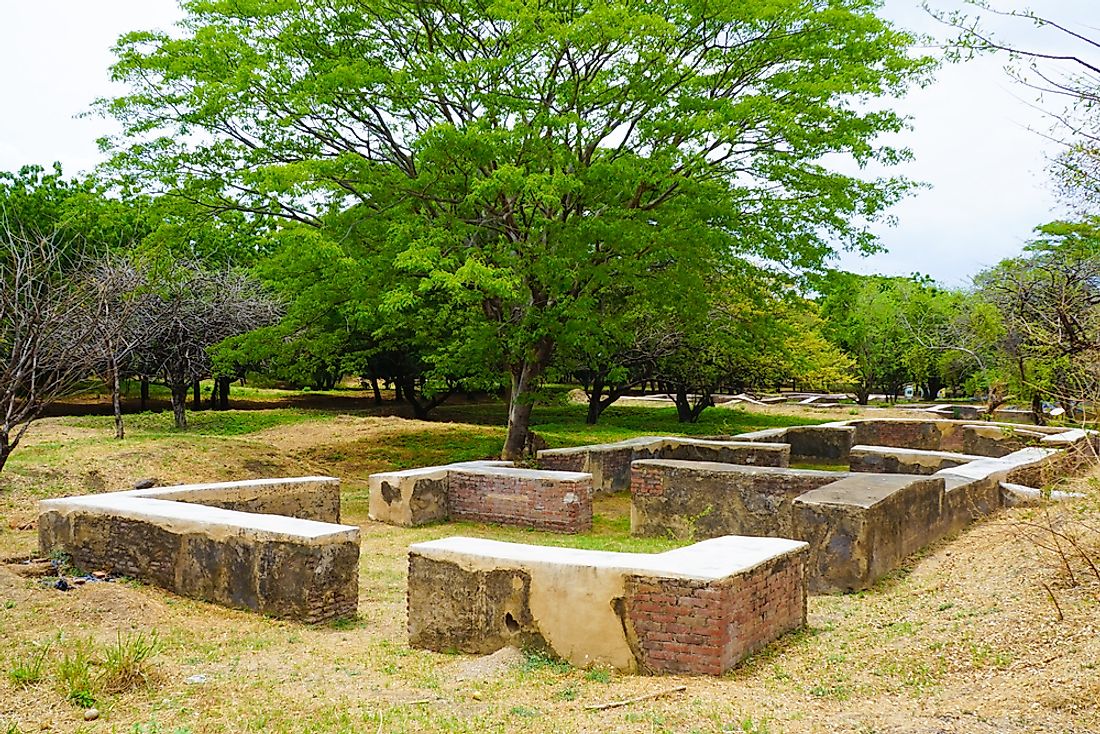UNESCO World Heritage Sites in Nicaragua

There are 18 UNESCO World Heritage Sites in Central America, ranging from natural areas, and archaeological sites to colonial cities. Two of the sites in the region are found in Nicaragua, a country located between the Caribbean Sea and the Pacific Ocean that is popular for its dramatic terrain of beaches, volcanoes, and lakes. The two heritage sites in the country are the León Cathedral (listed in 2011) and Ruins of León Viejo (listed in 2000). Apart from the two sites, Nicaragua also has five sites in the tentative list of World Heritage Sites.
Designated Heritage Sites In Nicaragua
León Cathedral
León Cathedral, officially known as the Cathedral of the Assumption of Mary, is the largest Cathedral in Central America. It is a historic and significantly important landmark in Nicaragua, located in León (Nicaragua’s second-largest city). The cathedral was designed by Diego Jose de Porres Esquivel and built between 1747 and 1814. The monument’s style can be considered to be eclectic and expressed a departure from Baroque and the adoption of the neoclassical architecture. Because of its strong walls, León Cathedral has survived volcanic eruptions, earthquakes, and wars. The cathedral was designated as a World Heritage Site by UNESCO in 2011.
The León Cathedral has a rich historical value as it was Episcopal first diocese in Nicaragua, founded in 1531. Beneath the cathedral is the remains of 27 people, among them 10 bishops, 3 poets, 5 priests, 6 notables, a musician, a slave, and a leader of the independence movement. The offer to burry people below the cathedral was a means of raising for the construction and maintenance of the building.
Ruins of León Viejo
When the Spanish conquistador Francisco Cordoba came to Nicaragua, he founded León Viejo in 1524. León Viejo, the original location of the city of León, is now the location of the town of Puerto Momotombo. When the Spanish colonialists came to Nicaragua, they settled in the area, which is located south of Volcano Momotombo and at the western end of Lake Managua. The area experienced a series of earthquakes including the 1594 and 1610. Because of these, the settlers relocated to the present city and the old city was gradually buried by the ash and stones from the Momotombo. The ruins of León Viejo were later discovered in 1967. The ruins cover an area of approximately 31.9 hectares. 17 colonial structures have been discovered at the site including the three monasteries; San Francisco, San Pedro, and La Merced. The ruins of León Viejo is a true reflection of the material culture of the earliest Spanish colonial settlement.
Tentative List Of World Heritage Site
Although Nicaragua has only two UNESCO World Heritage Sites, five other sites have been included in the tentative list. One of the sites is the City of Granada and its environment (listed in 2003). The city was founded in 1524 by the Spanish and is one of the oldest cities that remain in its original location. Other sites include the Fortress of Immaculate Conception, the Natural Reserve “Bosawas,” the Natural Reserve “Miskitos Keys,” and Volcano Masaya National Park. The four were included in the tentative list in 1995.
UNESCO World Heritage Sites in Nicaragua
| Rank | UNESCO World Heritage Sites in Nicaragua |
|---|---|
| 1 | León Cathedral |
| 2 | Ruins of León Viejo |







